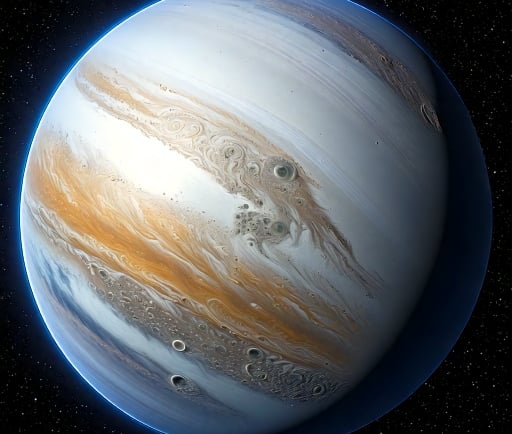TYC 8998-760-1: Enormous Gas Giant


Introduction to TYC 8998-760-1
TYC 8998-760-1 is a fascinating gas giant exoplanet that has garnered significant attention from the astronomical community. This celestial body orbits a K-type star and is notable for its extraordinary characteristics, including a mass equivalent to six Jupiters. Understanding such exoplanets expands our knowledge of planetary systems beyond our own, shedding light on the dynamics of gas giants in the universe.
The Characteristics of TYC 8998-760-1
One of the most intriguing aspects of TYC 8998-760-1 is its impressive mass, which is six times that of Jupiter, the largest planet in our solar system. Such a mass indicates a formidable gravitational influence that can impact surrounding celestial bodies and the environment within its orbit. This gas giant is also intriguing due to its orbiting period, which takes approximately 5727.6 years to complete a full rotation around its star. This lengthy orbital period can provide insights into the gravitational interactions between the star and the gas giant, as well as the potential for other celestial bodies within the same system.
Implications for Future Research
The study of TYC 8998-760-1 and similar gas giant exoplanets is crucial for expanding our understanding of planetary formation and evolution. By analyzing the characteristics of such massive exoplanets, researchers can further explore the diversity of planetary systems. The implications of such findings may extend to the search for conditions suitable for life beyond Earth, as understanding these distant worlds can inform our perspectives on habitability.
In conclusion, TYC 8998-760-1 serves as a significant example of the kinds of celestial wonders that exist in our universe. With a mass six times that of Jupiter and a leisurely orbital period of 5727.6 years, it is a remarkable object of study for astronomers. Continued research into such gas giants will undoubtedly lead to greater insights into the formation of planets and the complexities of planetary systems beyond our solar neighborhood.
